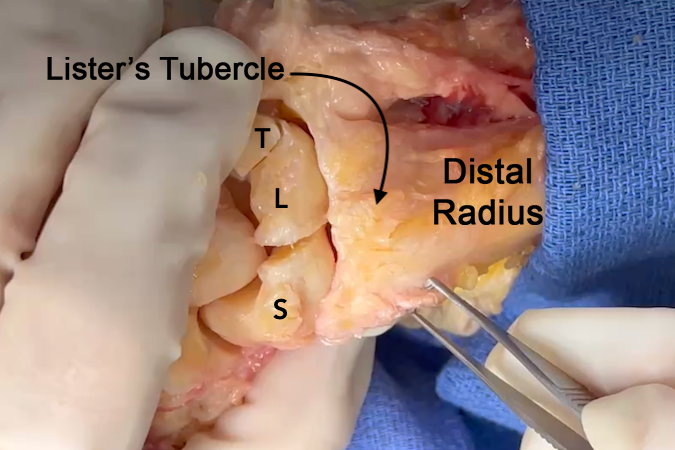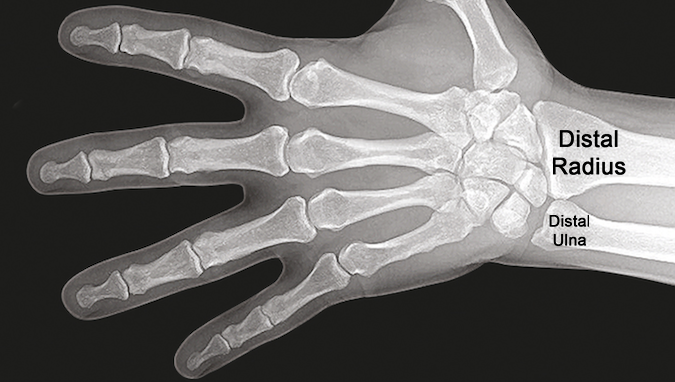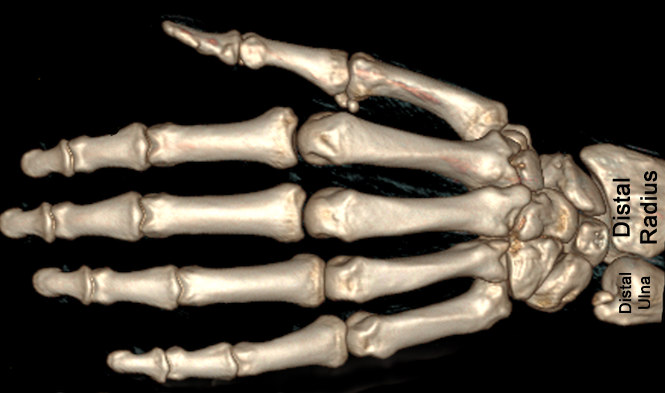Distal Radius Anatomy
- Distal radius articulates primarily with scaphoid and lunate but also with the distal ulnar head.
The distal radius had three facets: scaphoid facet, lunate facet, and the sigmoid notch.
The radiocarpal joint allows flexion/extension; ulnar and radial deviation.
Sigmoid notch is a small concavity on the medial side of the distal radius where the head of the ulna articulates.
Rotation (supination and pronation) occurs via the distal radioulnar joint which is the joint between the ulnar head and the sigmoid notch.
Ulnarly the distal radius and the ulna attach to the TFCC. The TFCC articulates with the triquetrum distally and the ulnar head proximally.
Bony surface landmarks on the distal radius include the radial styloid with its dorsal groove for the EBP and APL and the Lister’s tubercle dorsally which provides a pivot point for the EPL.
The radial styloid process is a bony prominence located on the lateral (radial) aspect of the radius and serves as an attachment point for ligaments that connect to the radius to the carpal bones
Palmarly the distal radius attaches to the carpus via the radioscaphocapitate ligament and the long and short radiolunate ligaments.
Dorsally the distal radius attaches to the carpus with the radioscaphoid ligament, the radiotriquetral ligament, and dorsal capsule.
Carpal bones of the first carpal row are interconnected by the interosseous (intrinsic) ligaments; the scapholunate and lunotriquetral ligaments.


